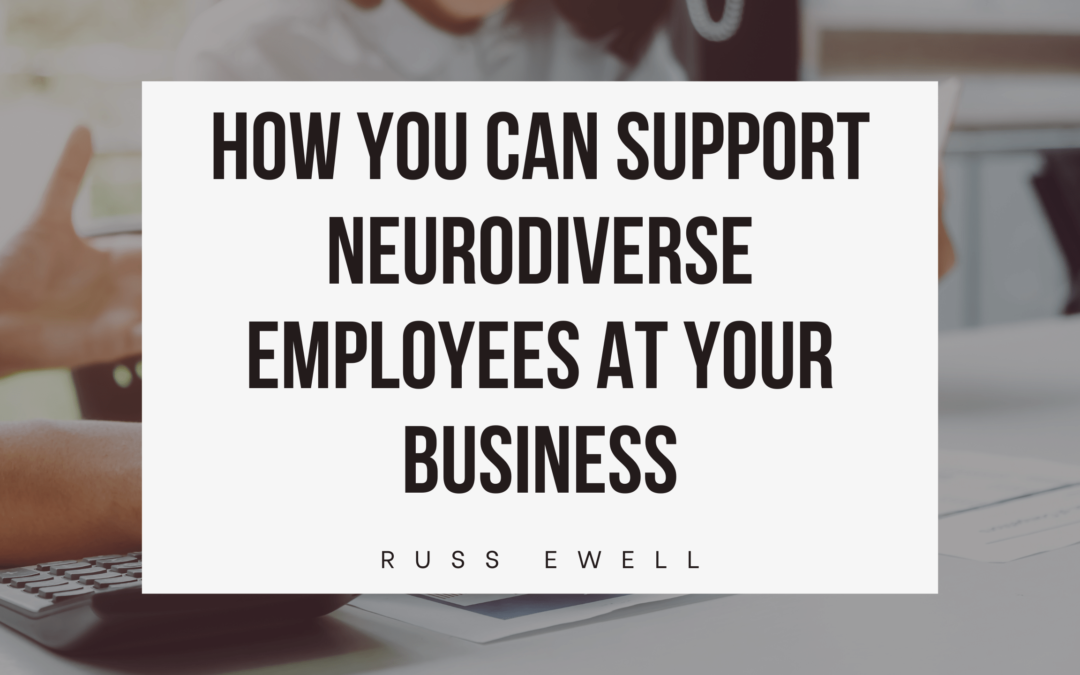We often think of race, sexual orientation, physical disability, and gender when it comes to diversity, equity, and inclusion. But what about cognitive and mental diversity? According to a study, around 15% of people worldwide are neurodivergent. This could include people in your workplace.
Although neurodiversity is a part of the ADA, it can be challenging for neurodiverse people to feel welcomed and safe at work. This is why business owners and entrepreneurs must support individuals them.
The Cleveland Clinic defines neurodivergent as a person whose brain has differences that affect how it works. This means that they have varying strengths and challenges compared to people with brains that don’t have these differences. Some conditions affecting neurodiverse people include learning disorders, medical conditions, and mental disorders.
Although we’ve all worked with individuals with different conditions, such as autism and ADHD, we may not have the necessary skills to create an environment that enables them to exhibit their best selves. This is why businesses must include neurodiversity in their DEI plans.
Building Inclusivity in the Workplace
Provide the Right Manager
If you have a manager or co-worker who works with a neurodivergent individual, they must be trained to practice compassionate communication and active listening. I typically suggest organizing team talks to help solve issues related to inclusivity. But, for individuals, being the only one who has a specific identity at the table can be isolating.
Having one-on-one conversations with a person who can listen to your concerns is also beneficial for individuals. A manager can be a great ally or partner because they’re responsible for listening to their staff members’ needs and have the authority to make changes to the organization’s policies.
Have Different Spaces Available
One of the most important factors that businesses can consider when it comes to creating an environment inclusive of neurodiverse individuals is the availability of dynamic spaces. This can be done by creating different work areas that accommodate different needs.
Having a variety of work areas that accommodate different needs can help employees feel more comfortable and motivated. It can also help neurodiverse individuals connect with their colleagues and improve their performance. Creating dynamic spaces can help employees feel like they have a good working environment.
The goal is to create environments that support and encourage workers with varying working styles to perform at their best. Dynamic physical spaces can also be an investment in the well-being of your employees.
Don’t Single People Out
One of the biggest mistakes that businesses and employees make is trying to categorize individuals with neurodiverse backgrounds. While it’s true that neurodiversity can overlap with other conditions, it’s important not to label people with these conditions as different.
As leaders, it’s important that we take the necessary steps to ensure that employees feel valued and included in the organization. However, at the same time, we should also avoid making them feel embarrassed or exposed.
To make sure that employees feel valued and included in the organization, it’s important that you regularly train managers and other staff members on how to approach and accommodate individuals with neurodiverse backgrounds.
Encourage Acceptance in the Workplace
When it comes to creating an inclusive environment, the first challenge that businesses face is their employees. Many of them may not understand why certain individuals have to be alone in the office while other workers are performing company functions. They may also not understand why some individuals are sensitive to the noise generated by the coffee maker.
Rather than overlooking the behavior of individuals with neurodiverse backgrounds, leaders should regularly train their staff members on how to approach and accommodate these individuals. This can be done through workshops or training sessions.
Creating an inclusive and warm work environment can help neurodiverse individuals thrive and work more efficiently. Having friends and colleagues who can support and encourage an individual with this condition can be an invaluable support system.
As you develop your DEI strategies and plans, consider how your organization can support sexual orientation and racial and ethnic minorities. While it’s important to include everyone, don’t forget about individuals with cognitive and mental disabilities. They need the same respect and inclusion.
To create an environment that’s conducive to the well-being of team members and individuals with mental and physical disabilities, you should establish a variety of physical spaces that are designed to make them feel supported. You can also train employees on how to approach and accommodate individuals with neurodiverse backgrounds.

